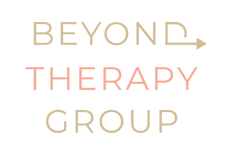May 23, 2025
Early Life Stress and Substance Use Disorders: The Critical Role of Adolescent Substance Use
Substance use disorders (SUDs) rarely occur in a vacuum. They’re often shaped by a complex mix of biology, environment, and early experiences. Among the most significant—but sometimes overlooked—factors in the development of addiction is early life stress, particularly during childhood and adolescence. Research has shown a powerful connection between early traumatic experiences and an increased…

Substance use disorders (SUDs) rarely occur in a vacuum. They’re often shaped by a complex mix of biology, environment, and early experiences. Among the most significant—but sometimes overlooked—factors in the development of addiction is early life stress, particularly during childhood and adolescence. Research has shown a powerful connection between early traumatic experiences and an increased likelihood of substance misuse later in life.
In this article, we’ll explore how early life stress (ELS)—including abuse, neglect, household dysfunction, or chronic emotional strain—can set the stage for adolescent substance use, and how that early use dramatically increases the risk of developing substance use disorders in adulthood. We will also talk about how help is available to deal with issues.
What Is Early Life Stress?
Early life stress refers to chronic or acute stressors experienced during childhood and adolescence—especially those that disrupt a child’s emotional, physical, or psychological development. These stressors may include:
- Physical, sexual, or emotional abuse
- Parental neglect or abandonment
- Exposure to domestic violence
- Growing up in a household with mental illness or substance abuse
- Parental incarceration or divorce
- Poverty or housing insecurity
- Chronic bullying or community violence
Together, these events are often referred to as Adverse Childhood Experiences (ACEs). Studies like the original CDC-Kaiser ACE study have shown that the more ACEs a person experiences, the higher their risk for a wide range of negative health outcomes, including addiction.
How Early Life Stress Affects the Brain
The brain is particularly malleable during early development, and chronic stress in childhood can fundamentally alter how it functions. Key systems affected include:
1. The Stress Response System (HPA Axis)
Children exposed to trauma often develop a hyperactive hypothalamic-pituitary-adrenal (HPA) axis, leading to constant high cortisol levels and a “fight-or-flight” state. Over time, this can lead to anxiety, depression, and impulsivity—all of which are linked to substance use risk.
2. Reward Pathways
Early trauma can interfere with the development of the brain’s reward system (especially dopamine transmission). This may make a person more sensitive to the rewarding effects of drugs or more likely to seek external substances to feel “normal.”
3. Emotional Regulation & Decision-Making
Areas like the prefrontal cortex, responsible for impulse control and decision-making, may develop differently under chronic stress—making teens more prone to risk-taking behaviors, including experimenting with drugs and alcohol.
Why Adolescence Is a Critical Period
While early childhood lays the foundation, adolescence is often the tipping point for individuals with a history of early life stress. This period of rapid brain development, increasing autonomy, and intense social pressures creates a perfect storm of vulnerability for substance use.
Key factors that make adolescence a pivotal phase include:
- Increased Sensation-Seeking: Teens are naturally drawn to novel, stimulating experiences—including drugs and alcohol.
- Underdeveloped Impulse Control: The prefrontal cortex isn’t fully developed until the mid-20s, making it harder for teens to weigh long-term consequences.
- Peer Influence: Teenagers are highly influenced by their social circles, and early exposure to peers who use substances can significantly increase usage.
- Emotional Escape: Teens who experienced trauma may turn to substances as a way to self-medicate anxiety, depression, or PTSD symptoms that go unrecognized.
Once substance use begins in adolescence—especially with regularity it can rewire the brain, making it more susceptible to addiction long-term.
The Escalating Risk of Early Use
The earlier a person begins using substances, the greater their risk of developing a substance use disorder. According to the National Institute on Drug Abuse (NIDA):
- People who begin drinking before age 15 are four times more likely to develop alcohol dependence than those who start at 21.
- Early marijuana use is linked to a higher risk of psychosis and long-term cognitive impairment.
- The adolescent brain is more neuroplastic, meaning drug use during this time can more deeply engrain addictive behaviors.
Adolescents who’ve experienced early life stress are especially vulnerable, as they may already have:
- Lower baseline dopamine levels (leading to greater reward-seeking)
- Fewer positive coping skills
- Limited access to stable, supportive environments
- Co-occurring mental health conditions
From Adolescent Use to Adult Substance Use Disorder
Adolescent substance use doesn’t guarantee addiction—but when early life stress is involved, it creates a high-risk trajectory. Without intervention, many teens who begin using substances will:
- Increase their frequency and quantity of use
- Progress to stronger or more addictive substances
- Develop dependence or tolerance more rapidly
- Struggle with co-occurring mental health issues
- Drop out of school or have trouble maintaining employment
- Engage in risky behaviors like unprotected sex, criminal activity, or impaired driving
By adulthood, what started as casual experimentation may have become a full-blown substance use disorder that affects every aspect of life.
Breaking the Cycle: Prevention and Early Intervention
The link between early life stress, adolescent use, and adult addiction is strong—but it’s not inevitable. With early intervention, supportive environments, and trauma-informed care, this cycle can be broken.
Key strategies include:
1. Trauma-Informed Therapy
Therapists trained in trauma-focused approaches (like EMDR, TF-CBT, or somatic therapy) can help teens and adults process unresolved early life experiences, reducing the emotional pain that drives substance use.
2. Family Therapy
Family systems often perpetuate or buffer the effects of early life stress. Involving caregivers in the healing process can improve communication, rebuild trust, and create accountability.
3. School and Community Programs
Education about emotional regulation, coping strategies, and substance awareness—delivered in schools or youth programs—can offer protective factors to at-risk teens.
4. Early Screening and Assessment
Primary care providers, schools, and youth programs should conduct regular screening for ACEs and early substance use. The earlier it’s identified, the easier it is to treat.
5. Integrated Mental Health and Addiction Treatment
Many individuals who use substances also live with undiagnosed depression, anxiety, or PTSD. Treating both simultaneously is critical to lasting recovery.
How Providers and Parents Can Help
Adults in positions of care—whether as parents, educators, clinicians, or community leaders can play a transformative role. Here’s how:
- Create Safe Spaces: Kids who feel safe at home, at school, or in therapy are more likely to open up about their experiences.
- Practice Nonjudgmental Listening: Validate their emotions before jumping into correction. Teens who feel understood are more receptive to guidance.
- Educate Without Shame: Offer honest, age-appropriate information about drugs and their impact—without using fear-based or punitive language.
- Model Healthy Coping: Children watch how adults handle stress. Modeling calm, healthy emotional expression teaches more than lectures ever will.
- Encourage Positive Identity Development: Support teens in finding passions, peer groups, and strengths outside of their trauma history.
Hope Beyond Early Life Stress
Early life stress can create deep emotional wounds—but it doesn’t have to define a person’s future. With the right support, adolescents who’ve experienced trauma can heal, grow, and live full, healthy lives—free from substance dependence.
Understanding the connection between childhood adversity, teen substance use, and adult addiction is the first step in building more effective prevention and treatment strategies. Whether you’re a parent, provider, or someone in recovery yourself, remember: early intervention saves lives, and healing is always possible—no matter how far back the pain began.
If you or someone you love is struggling with substance use and trauma, reach out to our licensed therapist today. You don’t have to face it alone and it’s never too late to start healing.
Recent Posts
